To capture cinematic aerial footage for your travel films, you'll need a high-quality drone with a 4K camera and 3-axis gimbal. Scout locations using satellite imagery and topographic maps, ensuring you comply with local regulations. Master essential flight patterns like orbits and dollies, and experiment with combinations for dynamic shots. Fine-tune your camera settings, using a flat color profile and adjusting shutter speed for natural motion blur. In post-production, apply color grading, speed ramping, and subtle camera shake for a professional look. With these sky-high techniques, you'll elevate your travel filmmaking to new heights. Discover more ways to soar above the competition.
Drone Equipment Essentials
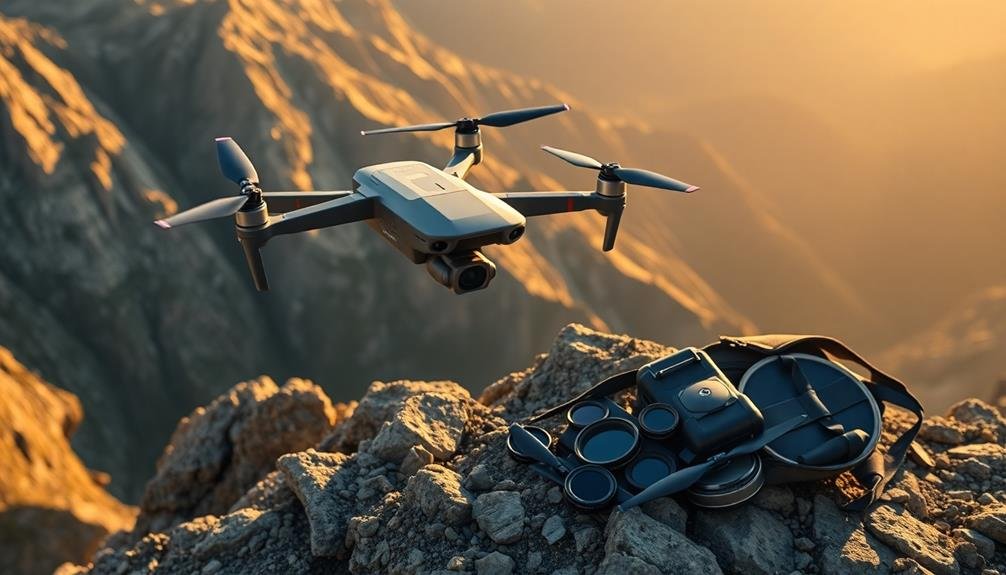
For capturing breathtaking aerial shots, you'll need the right drone equipment. Start with a high-quality drone that offers stable flight and excellent camera capabilities. Look for models with GPS positioning, obstacle avoidance, and long battery life. Popular choices include DJI's Mavic series or the Autel EVO II.
Invest in a drone with a 4K camera and a 3-axis gimbal for smooth, professional-looking footage. Ascertain your drone has adjustable camera settings like ISO, shutter speed, and aperture for greater control over your shots.
Don't forget essential accessories. Extra batteries will extend your filming time, while ND filters help manage light in bright conditions. A sturdy carrying case protects your equipment during travel.
For more advanced setups, consider a drone with interchangeable lenses or the ability to carry a separate camera. These options provide greater flexibility and image quality but may require additional licensing.
Familiarize yourself with local drone regulations before flying. Many countries require registration and have specific rules about where and when you can operate your drone.
Always prioritize safety and respect for others when filming.
Scouting Perfect Aerial Locations
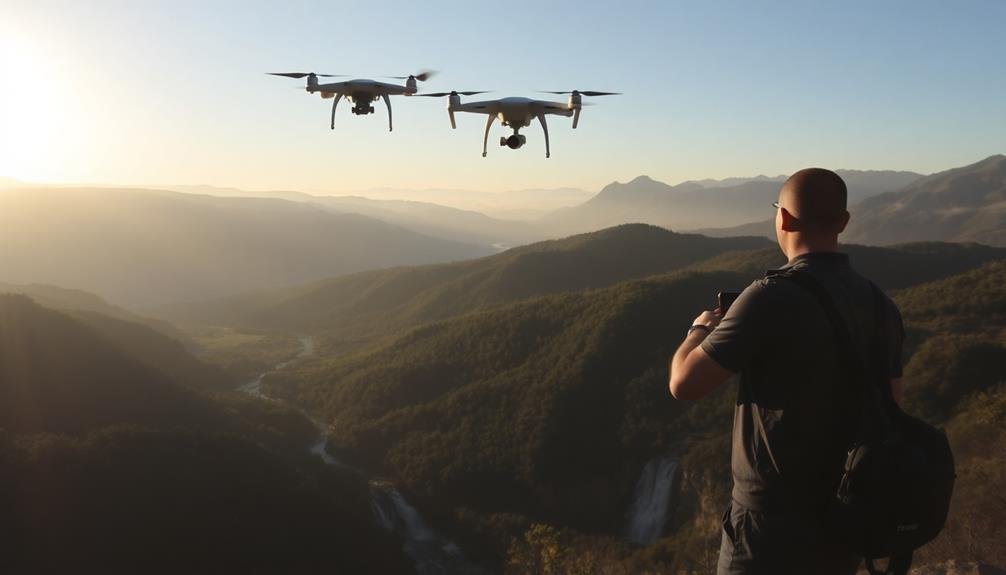
When scouting perfect aerial locations, it's crucial to research and plan ahead. Start by studying satellite imagery and topographic maps to identify potential spots with interesting landscapes, architectural features, or natural wonders. Consider the time of day for ideal lighting conditions and how sunlight will interact with your subject.
Once you've identified promising locations, check local regulations and obtain necessary permits for drone flights. Be aware of no-fly zones, altitude restrictions, and privacy concerns. Visit the site in person to assess potential hazards like power lines, trees, or tall structures that might interfere with your flight path.
Look for diverse shooting opportunities within a single location. Seek out elevated vantage points, unique patterns in the landscape, and contrasting elements that'll create visual interest. Consider how different weather conditions might affect your shoot and plan accordingly.
Don't forget to scout for safe takeoff and landing zones. Verify you have a clear line of sight to your drone at all times.
Mastering Flight Patterns

Smooth, controlled flight patterns are the backbone of cinematic aerial footage. You'll need to master various movements to capture stunning shots that elevate your travel videos. Start with basic patterns like straight lines, circles, and figure-eights, then progress to more complex maneuvers.
Practice these essential flight patterns:
| Pattern | Description | Best Use |
|---|---|---|
| Disclose | Slowly ascend or move forward | Revealing landscapes or landmarks |
| Orbit | Circle around a subject | Showcasing 360° views |
| Dolly | Move laterally at a constant height | Following subjects or parallax effects |
As you improve, experiment with combinations and shifts between patterns. Remember to maintain a steady speed and smooth acceleration/deceleration for professional-looking results. Adjust your drone's settings to match the shot you're aiming for, like tweaking the gimbal speed for smoother pans.
Don't forget to reflect on your subject's movement when planning your flight path. For dynamic shots, try leading or following moving subjects while maintaining a consistent distance. With practice, you'll develop an intuitive sense of how to choreograph your drone's movement to create engaging aerial sequences that enhance your travel storytelling.
Advanced Drone Camera Settings
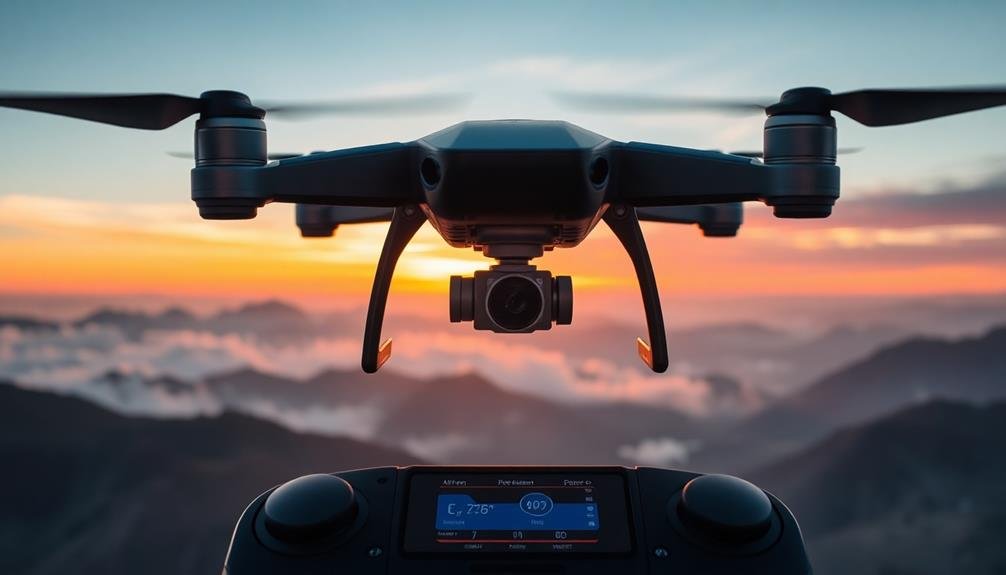
Frequently overlooked, advanced drone camera settings can make or break your cinematic travel footage. To elevate your aerial cinematography, you'll need to master these settings. Start by adjusting your drone's camera to shoot in a flat color profile, which allows for greater flexibility in post-production color grading.
Next, set your shutter speed to twice your frame rate for smooth, natural-looking motion blur. Don't forget to fine-tune your ISO and aperture settings to achieve the perfect exposure. In bright conditions, use ND filters to maintain your desired shutter speed without overexposing the image. For sharper footage, enable your drone's mechanical shutter if available.
Here are four key advanced settings to experiment with:
- Manual focus for precise control over depth of field
- Adjustable gimbal settings for smoother pans and tilts
- RAW or Log format recording for maximum dynamic range
- Custom white balance for accurate color representation
Lastly, consider shooting in a higher frame rate for slow-motion capabilities during editing. By mastering these advanced drone camera settings, you'll capture breathtaking cinematic travel footage that stands out from the crowd.
Remember to practice and experiment with different combinations to find what works best for your unique style and environment.
Post-Production Aerial Editing Techniques
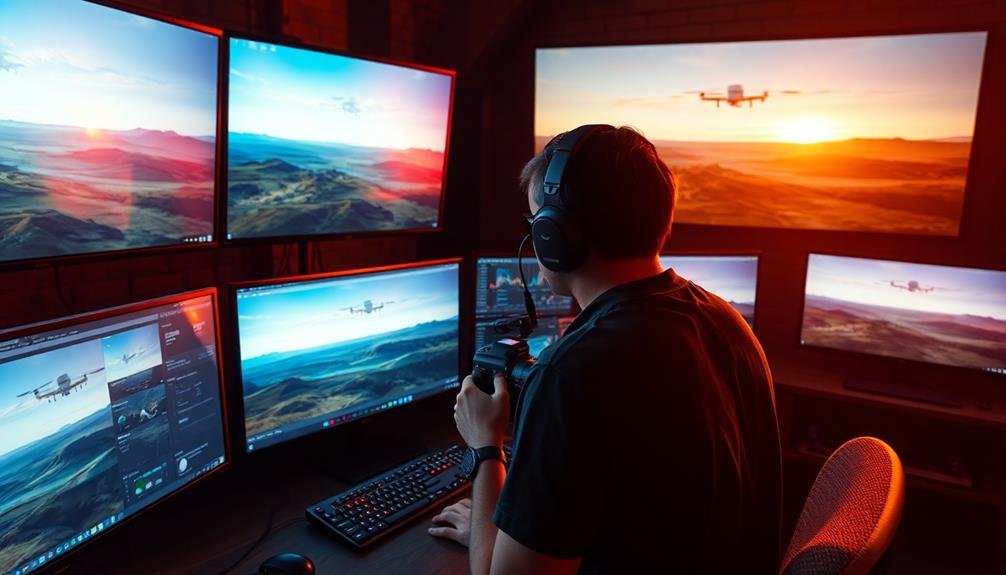
With your drone footage captured using advanced camera settings, it's time to bring your aerial cinematography to life through post-production editing. Start by organizing your clips and selecting the best takes. Then, apply color grading to enhance the mood and atmosphere of your aerial shots. Use LUTs (Look-Up Tables) to achieve a cinematic look quickly, or manually adjust contrast, saturation, and white balance for more control.
Next, focus on smooth shifts between clips. Employ techniques like speed ramping, where you gradually increase or decrease the playback speed, to create dynamic movement. Add subtle camera shake to stationary shots for a more organic feel, and experiment with masking to reveal or hide elements within the frame.
| Editing Technique | Purpose | Effect |
|---|---|---|
| Color Grading | Enhance mood | Visual cohesion |
| Speed Ramping | Create dynamism | Fluid motion |
| Camera Shake | Add realism | Organic feel |
Frequently Asked Questions
How Do I Obtain Necessary Permits for Drone Filming in Different Countries?
To obtain drone filming permits abroad, you'll need to research each country's specific regulations. Contact local aviation authorities, submit required paperwork, and provide proof of insurance. Don't forget to check for restricted areas and time limitations.
What Are the Best Practices for Drone Safety During Cinematic Travel Shoots?
For drone safety during cinematic travel shoots, you'll want to:
- Check weather conditions
- Maintain visual line of sight
- Avoid no-fly zones
- Keep batteries charged
- Inspect equipment regularly
- Follow local regulations
- Use spotters when necessary
How Can I Incorporate Storytelling Elements Into My Aerial Travel Footage?
You'll elevate your aerial travel footage by weaving in storytelling elements. Plan your shots to capture the journey's essence, highlight local landmarks, and showcase human interactions. Use varied angles and shifts to create a compelling narrative flow.
What Insurance Options Are Available for Drone Equipment and Liability Coverage?
You'll want to contemplate both equipment and liability insurance for your drone. Check out specialized drone insurance providers, or add coverage to your existing policies. Don't forget to explore options for personal injury and property damage liability.
How Do I Handle Unexpected Weather Changes During a Planned Aerial Shoot?
You'll need to stay flexible and prioritize safety. Monitor forecasts closely, have backup plans, and be prepared to reschedule. Don't risk your equipment or safety. Always comply with local regulations, even if it means postponing your shoot.
In Summary
You've now revealed the secrets to cinematic travel filming from the sky. With the right drone equipment, carefully scouted locations, and mastered flight patterns, you're ready to capture breathtaking aerial footage. Don't forget to fine-tune your camera settings and apply advanced editing techniques in post-production. As you soar to new heights, you'll create stunning visual stories that transport viewers to far-off destinations. Keep practicing, and you'll soon be crafting unforgettable aerial masterpieces.

As educators and advocates for responsible drone use, we’re committed to sharing our knowledge and expertise with aspiring aerial photographers.
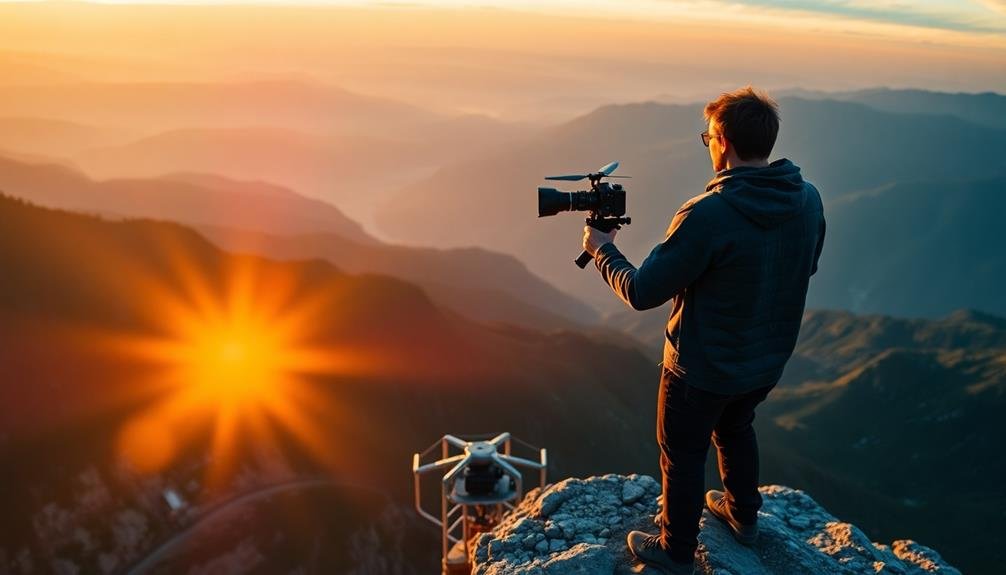


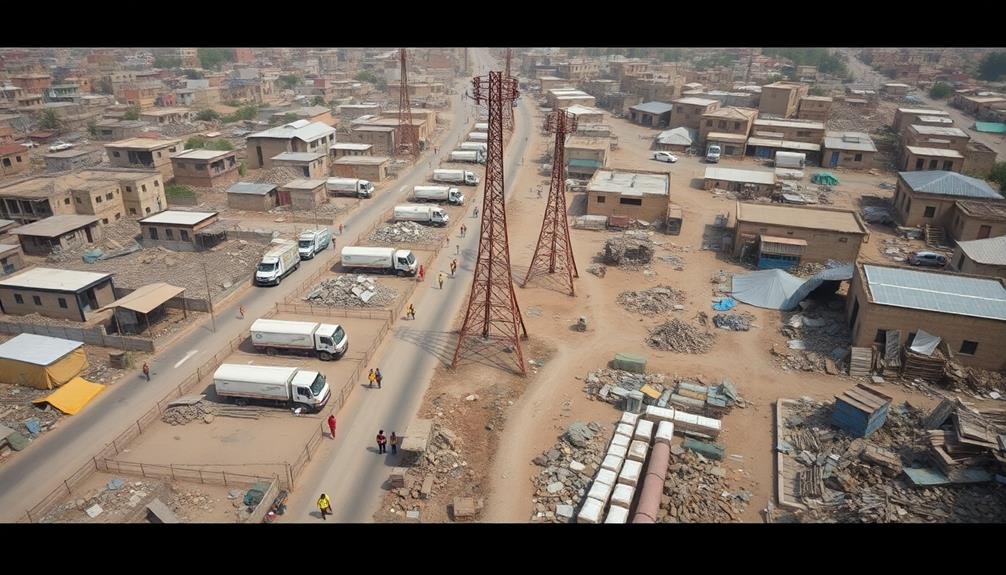
Leave a Reply